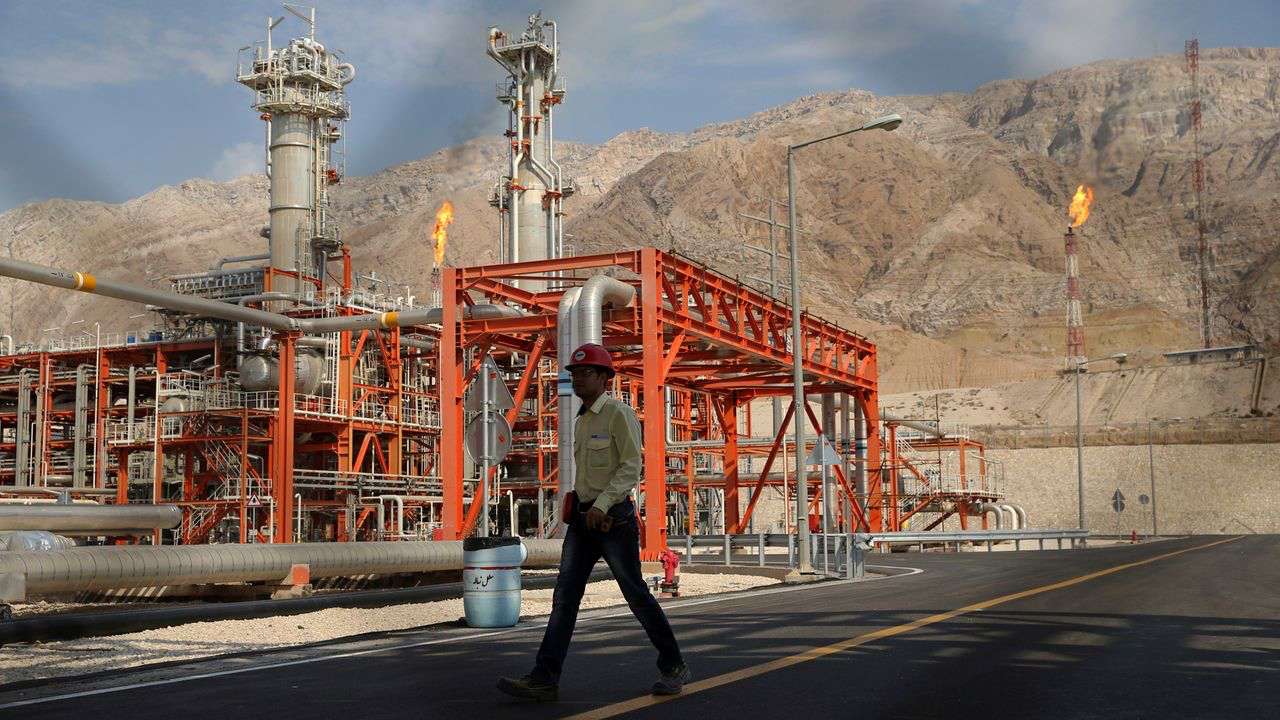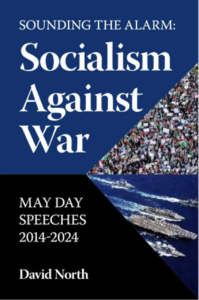By Gabriel Black.
~Given the enduring supremacy of oil and gas, countries holding large, cheap reserves of the commodity remain essential to geopolitical calculations~
The United States and Israel are on the brink of war with Iran. While the Biden administration has publicly stated that it does not want “escalation,” it has made clear that it will support Israel regardless of what Netanyahu does. Nearly every bomb dropped on Gaza and Lebanon was made in the US and given for free to Israel by the Biden-Harris administration.

For Netanyahu, who faces multiple criminal indictments once he leaves office, this moment presents an opportunity to realize the long-held, grotesque ambitions of the Israeli ruling class: to destroy the Iranian regime through war. As the Financial Timeswarned this past weekend, “the chances of an Israeli attempt to topple the Iranian regime cannot be fully discounted.” The paper noted that last week Netanyahu declared, “When Iran is finally free—and that moment will come a lot sooner than people think—everything will be different.”
The Trump faction of the American ruling class has expressed its full backing for such a war. Jared Kushner, Trump’s son-in-law and former Middle East adviser, wrote a long post on X arguing for Israel and the US to topple the Iranian regime. He stated, “Iran is now fully exposed. … Failing to take full advantage of this opportunity to neutralize the threat is irresponsible.”
Though other sections of the ruling class have voiced concerns about the spiraling situation, the logic of their position—unconditional support for Israel’s actions—puts them on the same road toward war with Iran. The Democrats may have tactical differences with Trump about how to overthrow the Iranian regime but both salivate at the prospect of doing so.
The removal of the Iranian regime, while a geopolitical end in itself for American imperialism, is also a critical steppingstone in its economic and military confrontation with its chief adversary: China. All factions of the American ruling class unconditionally support Israel because they know that controlling the resource-rich Middle East—and ending the Ayatollah’s power—will significantly increase their power and flexibility in a war with China.
The importance of Iranian hydrocarbons
Iran is a large country, roughly the size of Spain, Ukraine and France combined. Eighty-nine million people live there. Compared to Iraq, its neighbor, which was invaded by the US in 2003, Iran has almost four times as many people and a far more sophisticated military and economy.
Iran has a long history of colonial subjugation, including British control over its oil industry in the first half of the 20th century, the CIA-MI6 coup in 1953 to prevent the nationalization of its oil industry and several decades of bloody rule by the US-backed Shah.
Everyone knows that Iran’s wealth primarily comes from its oil. Iran produces a little more than 3 million barrels of oil per day, about 3 percent of the world’s total. What is not as well understood, however, is the potential for Iran’s oil production to expand. Only three other countries in the world have larger reserves of commercially realistic oil (Saudi Arabia, Russia and Iraq). Additionally, Iran has the second-largest reserve of natural gas in the world after Russia.
Oil and natural gas remain the energetic bedrock of the global economy. Despite efforts to promote new alternative energies, the “energy transition” under capitalism remains a half-hearted and contradictory affair. The principal concern of the US and Europe with their investment in EVs and critical minerals is not stopping global warming but ensuring their economic and geopolitical supremacy vis-à-vis China, which has excelled in this area. Fifty-seven percent of the world’s energy comes from oil and gas, another 27 percent from coal, and just 1 percent comes from solar, a record high.
Given the enduring supremacy of oil and gas, countries holding large, cheap reserves of the commodity remain essential to geopolitical calculations. It is striking that Russia, Iraq and Iran—after Saudi Arabia—are the world’s largest holders of cheap oil reserves. Each country has been a principal target of US imperialism over the last quarter-century. The US invaded Iraq and is now on the brink of war with both Russia and Iran, the second and third largest holders of oil and gas reserves.
What is more, each of them—partially due to being squeezed and sidelined by economic sanctions—has a relatively underdeveloped oil industry, deprived of vital streams of capital and advanced technology required for production. This is evident in the case of Iraq, where after the US’s brutal invasion, American and European oil companies significantly raised production, increasing output from 2 million to almost 5 million barrels per day today.
The US oil boom’s role in imperialist strategy
Were the current US-Israeli onslaught taking place 10 or 15 years ago, the impact on global markets would be significantly worse. In the last few days, oil prices have risen by about 10 percent, the largest increase in two years since the beginning of Russia’s invasion of Ukraine. However, a dramatic shift in global oil and gas markets has tempered the effect.
In the last 15 years, the US has experienced the largest oil and gas boom in world history through hydraulic fracturing. This method allowed the US to grow from about 5 million barrels of production per day (mb/d) to over 13 mb/d. This represents about 15 percent of the world’s oil supply and is the only major source of supply growth internationally during this time.
The US ruling class is in an entirely different situation today regarding controlling global oil and gas production than when it was planning the Iraq invasion in the late 1990s and early 2000s. By being able to put a lid on oil and gas prices through fracking, US imperialism has been able to afford the loss of oil from Libya, Russia and Iran on the world market, allowing the US and its NATO allies to squeeze these countries and make plans for their regimes’ overthrow. (In Libya’s case, a “successful” plan that has led to a permanent state of civil war.)
The US oil boom, however, will not last forever. Generous estimates give it another 10 years, after which it will precipitously fall.
In his critical work Imperialism: The Highest Stage of Capitalism written in 1916, Lenin explained the importance of imperialism remaining one step ahead of its current needs. He wrote,
The more capitalism develops, the more the need for raw materials arises, the more bitter competition becomes, and the more feverishly the hunt for raw materials proceeds all over the world, the more desperate becomes the struggle for the acquisition of colonies.
To this, one could add that resources also deplete, and as they deplete, this “feverish hunt” further intensifies.
Where are the future supplies of oil and natural gas—so vital to the global economy—that will persist as other sources dry up, such as US fracking? They remain in the Middle East and Russia, with Iran, Russia, Iraq and Saudi Arabia being some of the most important future sources.
China and the US
It is important to stress that a key driver of US imperialism is the growing military and economic collision with China’s development. The US and its allies are fundamentally opposed to giving Chinese capitalism a “seat at the table” of the most advanced capitalist countries.
For several decades, China served as the cheap goods platform for the world’s major companies. But due to its own internal development—particularly in education and more advanced manufacturing processes—China has now created domestically controlled industries that seriously challenge US and European companies.
This is most obvious in the realm of automobiles, where Chinese EVs, advanced and cheaper than those of the US, have experienced rapid growth. In just a few years, China’s auto exports have gone from being a small fraction of those of Japan, the US and Germany to now overtaking all of them.
Having completely jettisoned past rhetoric of “free trade,” the US and its allies seek to prohibit Chinese corporations from playing a major role in the global economy at all costs. Confronting its own deepening economic and social contradictions, the US seeks to use its still dominant military and financial power to undermine the economic rise of China.
A central reason to control geostrategic resources like oil and minerals is not simply to profit from them but to pressure countries by denying access to this vital supply of energy and resources.
China, for its part, has much of the world’s critical mineral processing located inside the country, posing a problem for US imperialism’s war plans. However, while China has a relative advantage in critical minerals and batteries, the US has the advantage in oil and gas, at least for the next five to 10 years.
A RAND Corporation study on how the US could win a war against China noted, “If China is vulnerable to critical shortages in a war with the United States, it could be … in oil supplies, of which it imports about 60 percent and has a declared strategic reserve of just ten days.” Indeed, it is likely that one of the key reasons China was so quick to pioneer EV technology was its ruling class’s awareness of this serious weakness.
Almost all the oil China imports comes from the Middle East. Now that that oil no longer flows to the US, due to the fracking boom, Saudi Arabia, Iran, Russia, Iraq and the UAE send their oil east to China. China imports a staggering 11.4 mb/d of oil, making it the largest importer of oil in the world. China is the top recipient of Iranian oil.
Oil and World War III
Taking the geopolitical situation as a whole:
- The US currently has control over global oil and gas markets more than any other country.
- This level of dominance, however, has a limited window of about five to 10 years before that control significantly erodes due to the eventual decline of fracking.
- The US, economically threatened, plans for a military confrontation with China centered around Taiwan.
- China is strategically vulnerable when it comes to oil, relying on massive daily flows of oil from the Middle East. Iran’s largest oil export partner is China.
- The Middle East and Russia, in the long term, will be the principal sources of the world’s remaining oil and gas. Iran is one of the single largest sources of undeveloped oil and gas reserves.
Taking these components together, it is evident that Iran’s oil and gas are of great interest to the United States and its partners. While many other factors go into the consideration of war, it is no accident that the principal targets of US imperialism are the most resource-rich countries in the world.
Netanyahu’s threats that Iran will “soon be free” reflect the fact that Israel, acting as a US attack dog, has been given a blank check to restructure the Middle East. The Israeli ruling class has its own distinct set of interests, but the Israeli war machine is ultimately funded, armed and driven by US geostrategic interest in the region.
This is the cold geostrategic logic that underlies the US-Israeli war against Iran and its proxies in the Middle East. The US seeks to strengthen and deepen its hold over this vital region as it prepares for a potential war against China.
For those who are disgusted by the rampage of Israel in the region and the blood-soaked, hypocritical role of the US, it is essential to understand that this war is not a “policy choice.” Capitalism, in its nationalist pursuit of profits at all costs, drives American imperialism toward a conflict that threatens the lives of billions of people. However irrational and dangerous, the American ruling class sees no other way out to its deepening spiral of economic, social and political crisis.
[This article was originally published in the WSWS here on 07 October 2024]









